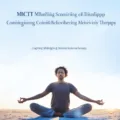Cognitive restructuring is a core component of Cognitive Behavioral Therapy (CBT), a type of psychotherapeutic treatment that helps individuals understand the thoughts and feelings that influence behaviors. This technique is designed to help people challenge and change unhelpful cognitive distortions and thought patterns that can lead to adverse emotional states and behaviors, such as anxiety, depression, and social withdrawal.
Understanding Cognitive Distortions
Cognitive distortions are irrational or exaggerated thought patterns that can perpetuate negative thinking and emotions. They often stem from past experiences and can be deeply ingrained in our thought processes. Recognizing these patterns is the first step towards cognitive restructuring.
Identifying Your Thought Patterns
To begin changing your cognitive distortions, you must first become aware of them. Keeping a thought diary can be an effective way to track patterns and triggers for negative thinking.
Techniques for Cognitive Restructuring
- Thought Challenging: This involves questioning the evidence for your negative thoughts, assessing their validity, and replacing them with more balanced thoughts.
- Reframing: Changing the perspective of a situation to see it in a different, more positive light.
- Mindfulness: Being present in the moment can help reduce the influence of past experiences and future worries on your current state of mind.
Benefits of Cognitive Restructuring
By engaging in cognitive restructuring, individuals can develop healthier thinking patterns, reduce stress and anxiety, improve mood, and enhance overall mental well-being.
Seeking Professional Help
While self-help techniques can be beneficial, working with a therapist trained in CBT can provide a structured approach to cognitive restructuring.
FAQ on Cognitive Restructuring
What are some common cognitive distortions?
Common distortions include all-or-nothing thinking, overgeneralization, catastrophizing, and personalization.
How long does it take to see results from cognitive restructuring?
The time it takes to see results can vary, but many people notice changes in a few weeks of consistent practice.
Can cognitive restructuring be done without a therapist?
While it’s possible to practice cognitive restructuring on your own, guidance from a therapist can enhance the process and provide additional support.
Is cognitive restructuring only for mental health conditions?
No, cognitive restructuring can be beneficial for anyone looking to improve their thought patterns and emotional regulation.
What’s the difference between cognitive restructuring and positive thinking?
Cognitive restructuring is not about replacing negative thoughts with positive ones but rather about creating realistic and balanced thoughts.









